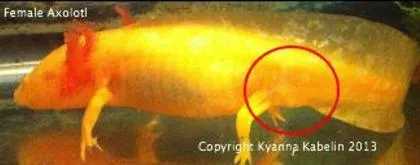Unraveling the Mysteries: Axolotl Gender and Sexual Maturity
Deciphering Gender and Navigating Sexual Maturity in Axolotls
Axolotls, with their perpetual youthfulness and regenerative abilities, are not only fascinating subjects of scientific study but also beloved aquatic pets. A common curiosity among axolotl owners is the ability to discern the gender of their pets and understand the nuances of their sexual maturity. This blog post delves into the subtle yet distinct differences between male and female axolotls and provides an overview of what to expect as they reach sexual maturity.
Identifying Gender in Axolotls
Gender determination in axolotls can be somewhat challenging, especially in younger individuals. However, several physical characteristics become more pronounced as they mature, usually around 6 to 18 months of age:
- Cloacal Shape and Size: The most reliable indicator of gender is the cloaca. Males possess a swollen cloaca, more pronounced and rounded, whereas females have a smaller, less prominent cloaca.
- Body Shape and Size: Females tend to have a fuller body shape, especially when gravid (carrying eggs), and may grow slightly larger than males.
- Fins: Males often exhibit a longer and more pronounced tail fin compared to females.


Understanding Sexual Maturity
Axolotls reach sexual maturity between 6 to 12 months, although this can vary depending on factors such as genetics, diet, and overall health. Signs that an axolotl has reached sexual maturity include:
- Behavioral Changes: Mature males may start displaying courting behavior, such as nudging or following potential mates.
- Physical Development: The development of the cloaca and the appearance of eggs in females indicate readiness for reproduction.
- Increased Interest in Food: A surge in appetite can occur as their bodies prepare for the breeding season.
Reproductive Behavior and Care
Breeding axolotls in captivity requires a responsible approach to ensure the health and well-being of both the adults and offspring:
- Conditioning: Prior to breeding, ensure both males and females are healthy and well-fed, with a diet rich in nutrients.
- Spawning Tank: Set up a separate spawning tank with optimal water conditions and places for laying eggs, such as plants or artificial substrates.
- Egg Care: Post-spawning, decide whether to leave the eggs with the female or raise them separately to increase survival rates.
Considerations for Axolotl Owners
- Responsibility: Breeding axolotls should be undertaken by experienced owners who can commit to the care of potentially hundreds of offspring.
- Legality and Ethics: Be aware of local regulations regarding the breeding and sale of axolotls, and consider the ethical implications of bringing more pets into the world.
- Health Monitoring: Whether breeding or not, regular health checks are crucial to detect any issues early and ensure a long, healthy life for your axolotls.
Conclusion: Embracing the Complexity of Axolotl Care
Understanding the gender and sexual maturity of axolotls adds another layer of depth to the rewarding experience of caring for these remarkable creatures. By appreciating these aspects, owners can provide better care, potentially engage in responsible breeding practices, and contribute to the preservation of this species. Always prioritize the well-being of your axolotls, offering them a safe, enriching environment throughout their lives.
The world of axolotls is full of wonders, from their unique appearance to their complex reproductive behaviors. Sharing knowledge and experiences about their care fosters a community of informed and compassionate axolotl enthusiasts dedicated to the thriving existence of these captivating amphibians.

